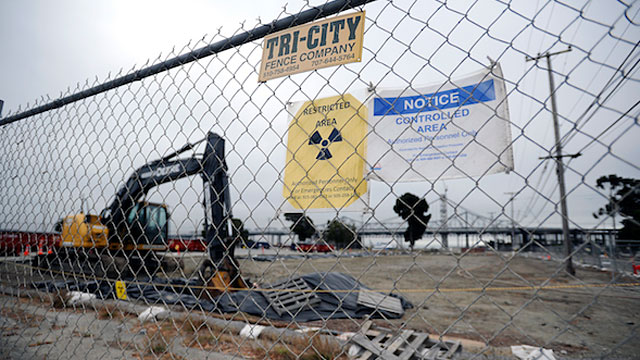
By Matt Smith and Katharine Mieszkowski, The Center for Investigative Reporting
Halfway across the San Francisco-Oakland Bay Bridge, an abrupt exit leads to Treasure Island, a seven-sided plain with spectacular views that inspire grandiose dreams. The Army Corps of Engineers created the island for the 1939 Golden Gate International Exposition, encircling 400 acres of bay shoals with rock walls, draining them, filling the void with sand and soil, and naming it after the famous adventure novel. Today, the city of San Francisco has set its sights on erecting a second downtown there.
But Treasure Island’s fate in the intervening decades – and a long-secret legacy of radioactive waste left behind – has complicated those plans.
After the exposition, the island was set to become a civilian airport – until the United States entered World War II. The Navy seized the land for the Treasure Island Naval Station and demolished the expo’s Art Moderne structures, leaving just the terminal and two hangars. In the spaces around them rose a little village of beige one- and two-story sheds.
For years, the base served its purpose until, in 1993, it landed on a decommission list. The military decamped, dismantling and cleanup began, and a few years later some former Navy housing was turned into city-subsidized rentals. By 2007, the Navy was well into the process of preparing the land for full transfer to civilian control.